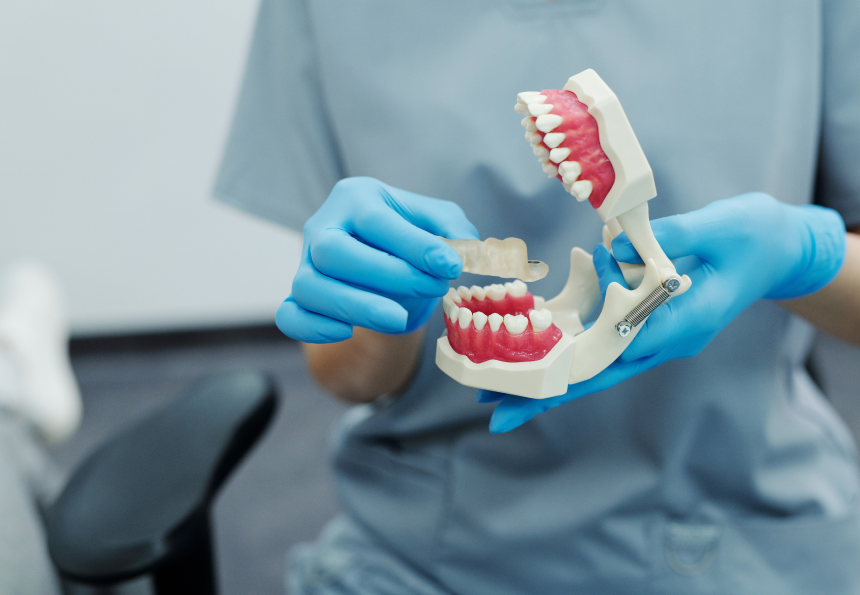Experience Comprehensive Dental Care with a Relied On Eugene Dentist
Experience Comprehensive Dental Care with a Relied On Eugene Dentist
Blog Article
Check Out the Array of Dental Issues Dentists Typically Deal With
Dentists are entrusted with dealing with a wide range of oral problems, each requiring specialized understanding and methods. From the widespread issue of tooth cavities triggered by bacterial activity to the extra dangerous development of gum tissue disease, oral professionals must be proficient at very early discovery and intervention. Tooth level of sensitivity, typically resulting from worn enamel, adds another layer of intricacy, while the very early recognition of dental cancer cells can be life-saving. Additionally, misaligned attacks necessitate customized treatment strategies to boost both functionality and aesthetics. What particular techniques do dental experts use to handle these varied obstacles successfully?

Cavities and Tooth Decay
Cavities, additionally known as dental caries, are created by the demineralization of tooth enamel due to acid-producing germs in the mouth. If left without treatment, tooth cavities can lead to significant oral issues, including infections and tooth loss.
To diagnose dental caries and tooth degeneration, dental experts utilize a mix of visual evaluations, oral X-rays, and often laser fluorescence tools. For more advanced decay, a dental professional may need to eliminate the jeopardized tissue and restore the tooth with fillings made from products such as composite resin, amalgam, or porcelain.
Safety nets are vital in combating cavities and dental caries. Regular oral exams, proper cleaning and flossing strategies, and a balanced diet plan low in sweet foods and drinks are fundamental practices that support oral health and reduce the threat of cavities.
Gum Tissue Illness
Periodontal illness, likewise known as gum disease, is a severe dental wellness concern that impacts the tissues bordering and sustaining the teeth. It begins with gingivitis, which is identified by red, inflamed periodontals that may hemorrhage easily. If left unattended, gingivitis can advance to periodontitis, a much more serious type of gum illness that can cause missing teeth and damages to the jawbone.
Periodontitis takes place when plaque, a sticky film of bacteria, hardens into tartar and builds up below the gum tissue line. This causes the gums to pull away from the teeth, creating pockets that come to be infected. As the body's body immune system fights the bacteria, the bone and connective cells that hold teeth in place are broken down. The threat factors for periodontal illness include inadequate dental health, cigarette smoking, diabetes, and hereditary predisposition.

Tooth Sensitivity
Beyond periodontal disease, an additional typical oral issue that people often run into is tooth level of sensitivity. Characterized by a sharp, transient discomfort in feedback to stimulations such as warm, cold, pleasant, or acidic foods and drinks, tooth level of sensitivity can dramatically impact a patient's top quality of life.
A number of variables add to the growth of tooth sensitivity. Hostile brushing, the use of rough toothpaste, and the consumption of acidic foods and drinks can wear down enamel. Additionally, oral procedures, cracked teeth, and gum disease can subject the dentin. To alleviate tooth sensitivity, dental practitioners might suggest utilizing tooth paste formulated for sensitive teeth, fluoride therapies to strengthen enamel, or oral bonding to cover exposed dentin. In extreme situations, even more advanced treatments such as gum grafts or root canals could be necessary.

Oral Cancer Cells
Dental cancer, a possibly deadly and serious problem, often flies under the radar in routine dental treatment discussions. This kind of cancer can influence any part of the mouth, including the lips, tongue, cheeks, flooring find of the mouth, difficult and soft tastes, sinuses, and throat. Early detection is important for effective therapy, yet numerous situations are diagnosed at advanced phases because of refined preliminary symptoms.
Dental professionals play an essential role in the very early discovery of dental cancer cells. During regular examinations, they thoroughly examine the mouth for irregular sores, persistent sores, or uncommon lumps. They might also utilize adjunctive screening devices such as special dyes or source of lights to identify questionable locations that are not visible to the nude eye.
Threat aspects for dental cancer cells include cigarette usage, extreme alcohol consumption, human papillomavirus (HPV) infection, and prolonged direct exposure to the sunlight. Clients are encouraged to report any kind of persistent modifications in their oral health, such as difficulty ingesting, unexplained bleeding, or feeling numb, to their dental practitioner instantly.
Misaligned Bites
Misaligned attacks, likewise recognized as malocclusions, are a typical oral problem that can dramatically influence both dental health and wellness and general lifestyle. These problems occur when the upper and lower teeth do not align correctly, causing problems in attacking, eating, and also speaking. Malocclusions can be classified into numerous kinds, consisting of overbites, underbites, crossbites, and open bites, each presenting special difficulties that need tailored treatment techniques.
The causes of misaligned bites vary and can include hereditary aspects, very early loss of key teeth, thumb sucking, and great site injuries to the jaw. Signs and symptoms typically consist of pain or discomfort in the jaw, constant attacking of the internal cheeks, and a raised threat of tooth degeneration and gum tissue illness as a result of problem in preserving dental health.
Orthodontists and dental professionals utilize a series of interventions to attend to misaligned attacks, from typical braces and clear aligners to extra advanced medical treatments in severe instances. Early diagnosis and therapy are vital to Resources avoid issues such as temporomandibular joint (TMJ) conditions and unusual endure teeth. Through thorough analysis and individualized therapy strategies, oral specialists play an essential role in dealing with malocclusions and enhancing individuals' oral function and visual appeals.
Conclusion
Dental caries and tooth decay result from microbial activity that compromises tooth enamel, while gum tissue disease can intensify from gingivitis to serious gum conditions. Tooth sensitivity includes discomfort from thermal stimulations, requiring details care.
To detect tooth cavities and tooth decay, dental practitioners utilize a mix of aesthetic assessments, oral X-rays, and often laser fluorescence devices.Beyond gum tissue illness, one more usual oral problem that individuals often run into is tooth sensitivity. Additionally, oral procedures, cracked teeth, and gum illness can subject the dentin. To alleviate tooth level of sensitivity, dental professionals may advise utilizing tooth paste developed for delicate teeth, fluoride therapies to enhance enamel, or dental bonding to cover exposed dentin - dentist eugene oregon. Cavities and tooth degeneration result from bacterial activity that jeopardizes tooth enamel, while gum tissue condition can escalate from gingivitis to extreme periodontal problems
Report this page